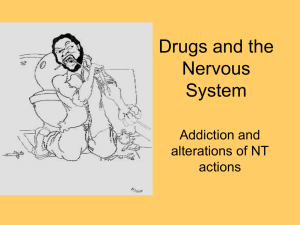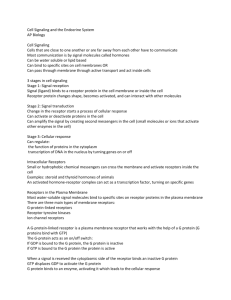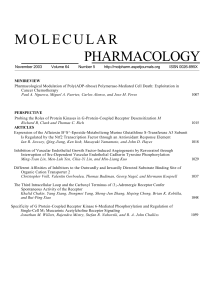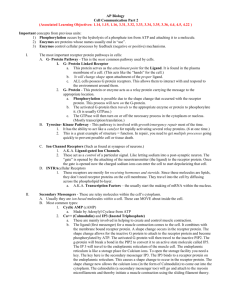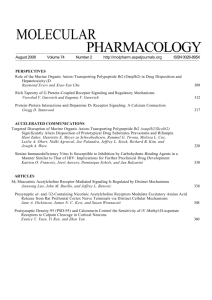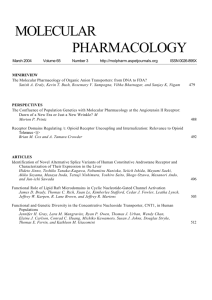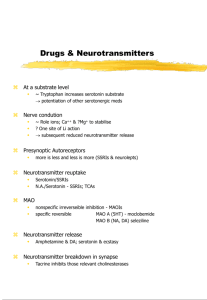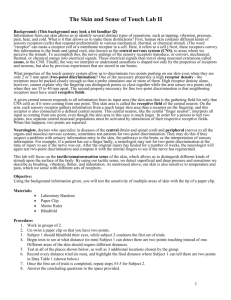Orientation to pharmacy
advertisement
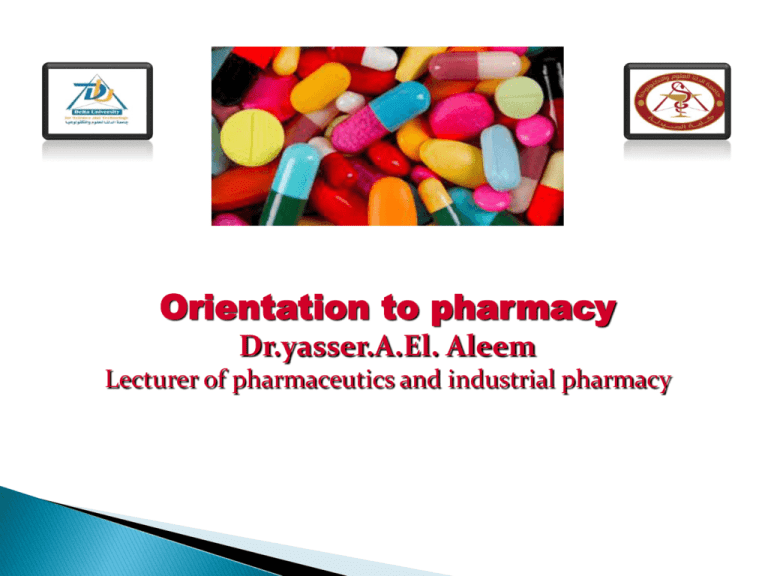
Orientation to pharmacy Dr.yasser.A.El. Aleem Lecturer of pharmaceutics and industrial pharmacy Lecture 2 Drugs Definition: Natural or synthetic substance is used in the diagnosis, treatment ,relief of pain , or prevention of disease . They may be either single chemical substances or mixtures of principles. General characteristics of drug: It is used to treat a disease. It is pure and has a defined chemical structure. It has well Known physical, chemical and biologic properties. Available from known sources. Any change in its chemical structure can cause changes in the body physiology. Most drugs have adverse reactions in the body. Nature and sources of drugs: Drugs may be obtained from one of the following sources: Plant sources: Various parts of plants may be used as sources of drugs, e.g. castor oil (laxative). Animal sources: Insulin is prepared from the pancreas of different animals, e.g. cattle or pig. Mineral sources: Some naturally minerals may be used as drugs, e.g. magnesium sulfate & iodine. Microorganisms: Fungi and bacteria isolated from soil are important sources of antibiotics, e.g. penicillin. Synthetic drugs: Many drugs are nowadays being produced in the laboratory of drug factory, e.g. aspirin, acetaminophen and sulfonamides. Nomenclature: Every drug has three names: 1) Chemical Name: The drug is named according to its chemical structure. 2) Generic name . The common name of the active drug in a drug product. • Non proprietary name is assigned to the drug to be easy to remember. • It should reflect some important pharmacologic or chemical characteristics of the drugs. 3) Brand name (trade name): • Proprietary name is privately owned by the manufacturer. • The name may have an indication to its therapeutic use or the name of the manufacturer.. Examples:1. Aspirin Chemical name: Acetyl salicylic acid Generic name: Aspirin Brand name ( trade name): Rivo, Aspocid or Juspirin . 2. Acetaminophen Chemical name: N-acetyl-p-amino phenol Generic name: Acetaminophen (USP) or Paracetamol (BP) Brand name: Abimol Paramol Panadol Pharmacodynamics How do drugs act? What the drug does to the body ( effect of the drug on the body) Drugs can produce their effects through one or more of the following mechanisms. 1. Drug-receptor interactions: • The cells in certain tissue contain structures called receptors. • Receptors are component of the cell that bind the drug to produce a response ( pharmacological effects). • Receptors are located at cell membranes or in the cell nucleus. • The drug is thought to fit onto a receptor like a key fits a lock. • The ability of the drug to bind to the receptor depends on the bond formed between the drug and the receptor. [D] + [R] [DR] Response Agonist: A drug which can bind to a receptor to produce a response. Antagonist: A drug which bind to receptor and produce no effect. 2) Antimetabolites/cytotoxic: Drug act by impairing cell reproduction (halting cell growth). This means that the affected cells may remain alive and may continue to carry out many of their functions, but are unable to reproduce leading to cell death Antimetabolites can be used in cancer treatment (a chemotherapy ) E.g., Methotrexate is used to treat certain types of cancer of the breast, or lung. It is also used to treat severe psoriasis and rheumatoid arthritis. 3) Action on enzymes: Drugs may produce their effects through inhibition or stimulation of certain enzymes. Sulphonamides are used as antibacterial agents as they inhibit folate synthase enzyme so decrease the synthesis of folic acid by bacteria death i.e., inhibit bacterial growth, by blocking folic acid synthesis. 4) Action on cell membrane: The action of nerves and muscles depends on ions passing across the membranes surrounding these cells. Certain drugs interfere with the movement of these ions and thus prevent nerve or muscle function (local anesthetics). 5) Chelating agents:( adsorbed drugs) Are chemical compounds that form non-absorbable complex excreted in the feces . E.g., activated charcoal is used as a non-specific antidote in treatment of poisoning as it adsorbs poisons on its surface and inhibit their absorption from the GIT.

